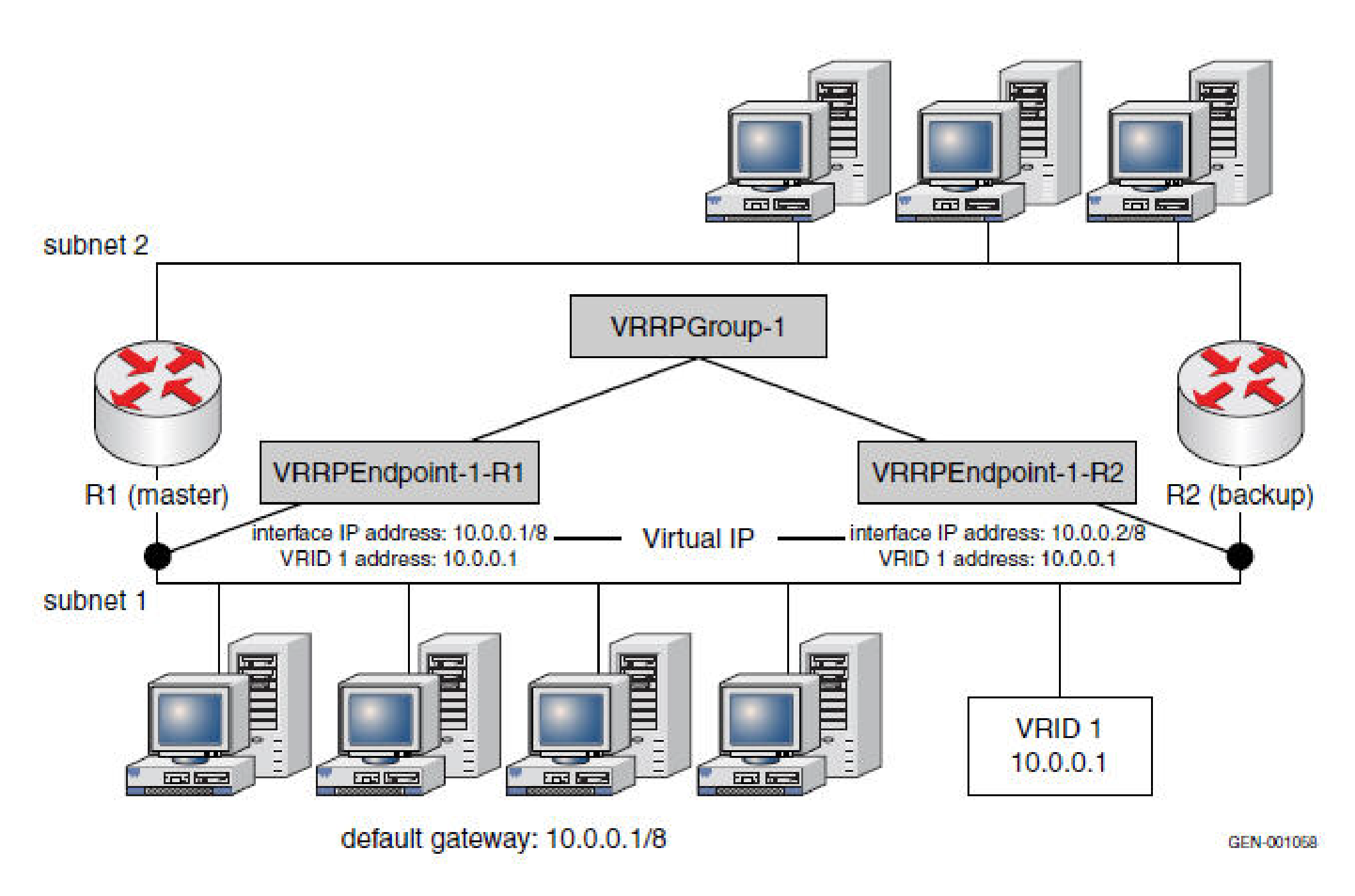Basic VRRP configuration illustrates the basic VRRP configuration.

The VRRP configuration uses a single Virtual Router Identifier (VRID 1). Router R1 is the address owner and serves as the primary router and router R2 serves as the backup router. The four end hosts on subnet 1 are configured to use 10.0.0.1/8 as the default router. IP address 10.0.0.1 is associated with VRID 1.
In this example, if R1 becomes unavailable, R2 takes over VRID 1 and its associated IP addresses. Packets sent to IP destinations outside the 10.x.x.x subnet using 10.0.0.1 as the router are then forwarded by R2. Even though R2 assumes the forwarding responsibilities of R1, it may or may not process any packet with destination address (DA) 10.0.0.1, depending on the accept-data configuration. When R1 becomes active again, it takes over as the primary router and R2 reverts as the backup router.